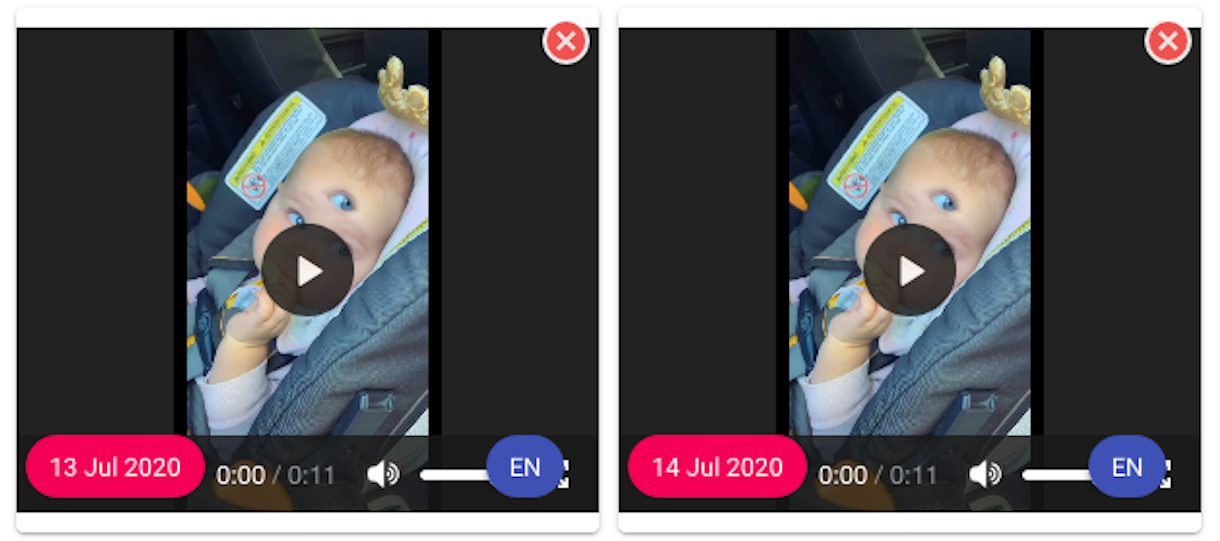A 15-second video of an infant with ‘three eyes’ has gone viral on social media.
On Facebook, it has been shared with two different texts in Telugu —
1. According to Potuluri Veera Brahmendraswamy, a strange baby was born abroad. (link)
(పోతులూరి వీర బ్రహ్మేంద్రస్వామి చెప్పిన విధంగా విదేశంలో వింతశిశువు జననం..ముచ్చటగా మూడుకన్నులతో మూర్తీభవించిన త్రినేత్రుడు…ఓం నమః శ్శివాయ)
2. As told by the Brahmin, the three-eyed man has also arrived on earth. (link)
(బ్రహ్మం గారు చెప్పినట్టు భూలోక త్రినేత్రుడు కూడా వచ్చేసాడు)
Alt News has also received several requests to fact-check this on WhatsApp (+917600011160) and on our official Android application.

Noticeable case of video editing
Alt News watched the video multiple times and noticed that it is a clear case of video editing. The eye on the right-hand side of the reader has been superimposed on the forehead of the baby. The right eye and the ‘third’ eye have the same movement.
 We performed a reverse image search and found that the viral video was posted by a Twitter account with Chinese caption “The three-eyed man appeared” (translated from 三只眼的人类出现了)” on July 9.
We performed a reverse image search and found that the viral video was posted by a Twitter account with Chinese caption “The three-eyed man appeared” (translated from 三只眼的人类出现了)” on July 9.
三只眼的人类出现了 pic.twitter.com/KEYegRRVYF
— 水镜先生(备用号) (@gmmj0709) July 9, 2020
The claim was earlier fact-checked by Hoax or Fact on July 11.
An edited video showing a baby with three eyes was believed to be true on social media.
Is it possible for children to be born with a third eye?
Babies can very rarely be born with extra eyes. It occurs as part of a rare congenital disorder called diprosopus where the trunk and limbs are normal but there is a partial or complete duplication of different parts of the face. It is also considered as a variety of conjoined twins (Bhuyan, M et al. 2018). Babies with this disorder are usually stillborn (born dead) as this disorder is often associated with deformities of the brain, spinal cord, heart and abdominal organs (Yahaya, R.S et al. 2018).
It is important to note that such deformities of duplication of body organs do not appear without disfigurement. Any picture or video of precisely placed extra body parts on a body with no disfigurement is unlikely to be real. Furthermore, in the case of diprosopus, there are multiple parts of the face that are duplicated resulting in a grossly deformed face. Below is a photograph of a newborn with diprosopus.

References
Bhuyan, M., & Haque, I. (2018). Diprosopus a rare craniofacial malformation. Asian journal of neurosurgery, 13(4), 1257.
Yahaya, R. S., Suwaid, M. A., Hassan, S., Lawal, Y., Hassan, I., Gwaram, B. A., & Yahaya, H. B. (2018). A “three-eyed” infant: A case of partial facial duplication (diprosopus monocephalus triophthalmos). West African Journal of Radiology, 25(1), 79.
Independent journalism that speaks truth to power and is free of corporate and political control is possible only when people start contributing towards the same. Please consider donating towards this endeavour to fight fake news and misinformation.




